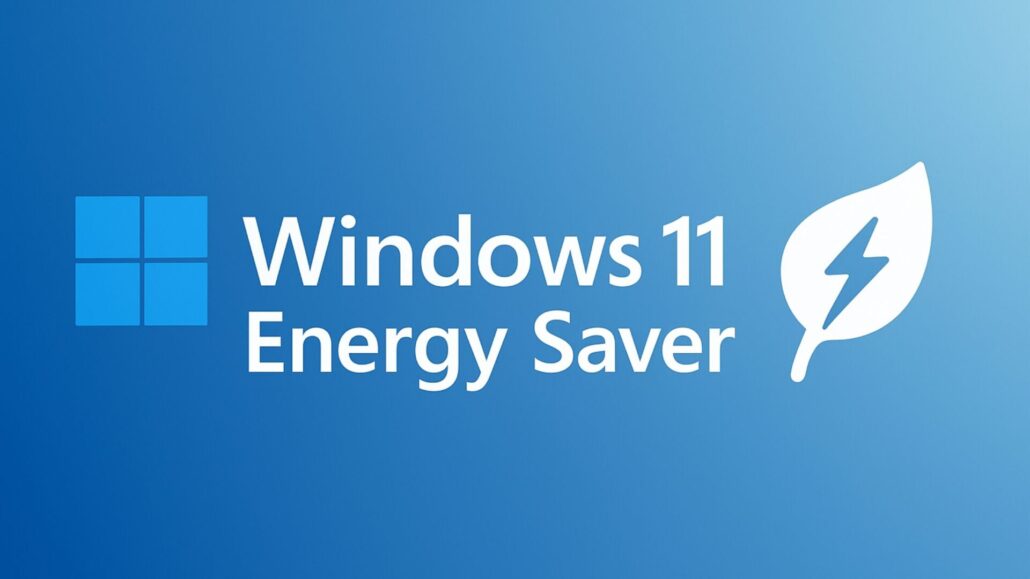Insider Leak Reveals Adaptive Energy Saver for Windows 11

Windows 11 Energy Saver is getting even smarter in the latest Insider builds, with the beginnings of an Adaptive Mode that promises dynamic, intelligent power management. As Microsoft refines its energy efficiency features, Adaptive Energy Saver could mark a significant leap from the existing Energy Saver plan.
What Is Adaptive Energy Saver?
Unlike the traditional Energy Saver, which applies static rules to reduce power consumption (lower brightness, limit background activity), Adaptive Energy Saver appears designed to dynamically adjust based on real-time conditions. Early hints suggest that it leverages machine learning profiles, user activity patterns, and perhaps environmental factors to fine-tune energy use without compromising performance unnecessarily.
The feature first came to light thanks to Windows enthusiast and feature hunter PhantomOfEarth, who uncovered references to Adaptive Energy Saver in recent Insider builds. Specifically, the toggle appears within the Windows Health and Optimized Experiences service, a system component that monitors overall PC health and usage optimization.
While not officially announced by Microsoft, the presence of flags and service entries strongly indicates that internal testing is underway. PhantomOfEarth’s findings have sparked curiosity among the Windows Insider community, eager to explore what adaptive power management could bring.
How It Works (So Far)
Though still in its infancy, Adaptive Energy Saver is speculated to:
- Analyze user interaction patterns to predict low-usage periods.
- Adjust processor and system resource allocation accordingly.
- Modify screen brightness and refresh rates dynamically.
- Use machine learning models trained on telemetry data to optimize settings for individual devices.
- Possibly factor in external environmental data like ambient light or time of day (pending official confirmation).
This approach aims to strike a balance between extending battery life and maintaining user experience quality—ideal for both laptops and increasingly for desktops.
Which Insider Builds Support It
Currently, Adaptive Energy Saver references have been spotted in Dev Channel builds and certain Beta Channel releases tied to the upcoming Windows 11 24H2 and experimental 25H2 builds. The feature resides under experimental flags managed by the Windows Health and Optimized Experiences service, which suggests it may initially roll out to select Insider rings for feedback and fine-tuning.
Advanced users can explore these features using tools like ViVeTool to enable hidden flags, but caution is advised since these builds are inherently unstable and subject to change.
Comparison with Energy Saver & Battery Saver
While Energy Saver (introduced in recent stable builds) operates on predefined thresholds, Adaptive Energy Saver promises more intelligence. Instead of simply flipping a switch at a certain battery level, it could:
- Learn from daily usage patterns.
- Gradually adjust system behaviors throughout the day.
- React to changes in workload without user intervention.
Battery Saver remains a legacy, one-size-fits-all option focused purely on limiting power draw, whereas Adaptive Energy Saver could personalize savings without user micromanagement.
Why It Matters
If successful, Adaptive Energy Saver could have several broad implications:
- User Benefits: Longer battery life, better thermals, less fan noise, and smoother performance.
- Enterprise Impact: IT admins may gain fine-grained control through Group Policy or Intune integration.
- Environmental Gains: Small efficiency boosts across millions of devices can translate into significant energy savings globally.
- Telemetry Feedback Loop: As Microsoft gathers more real-world usage data, the models driving Adaptive Energy Saver can improve continuously.
How to Try Windows 11 Energy Saver Adaptive Mode Today
For adventurous users, enrolling in the Windows Insider Program’s Dev or Beta Channels offers a chance to preview features like Adaptive Energy Saver. Remember to:
- Backup important data before switching Insider channels.
- Keep your device updated to the latest Insider build.
- Use ViVeTool carefully to enable hidden features if comfortable with advanced tools.
- Participate in feedback to help Microsoft refine the feature.
What’s Next
Microsoft has yet to formally announce Adaptive Energy Saver or confirm a rollout timeline. However, given its placement within internal services and ongoing development in pre-release builds, it may debut alongside or shortly after the Windows 11 24H2 update. Its full potential may not be realized until broader telemetry feedback shapes its algorithms over time.
Wrapping Up
Adaptive Energy Saver signals Microsoft’s continued investment in intelligent power management for Windows 11. As it moves from hidden flags to mainstream availability, it could offer users smarter, more seamless energy savings. Insiders should keep a close eye on upcoming builds, as this promising feature edges closer to reality.
Tony has a bachelor’s degree from the University of Phoenix and over 14 years of writing experience between multiple publications in the tech, photography, lifestyle, and deal industries.





Leave a Reply
Want to join the discussion?Feel free to contribute!